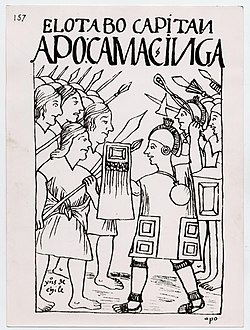Halberd
The halberd is a wooden polearm about two meters long and has on its "arms head" a spear point as the upper breastplate, a transversal blade shaped like an ax blade on one side, and another smaller spear or hook breastplate on the opposite side.
Origins
Although certain types of polearms with very similar functions (jǐ) were used in China since the Zhou dynasty, their medieval form was developed in Europe around 1300 by the Germans and the Scandinavian [citation needed]. Although its popularity came from the hands of Swiss mercenaries.
In Christian iconography, the halberd is an attribute of the apostle Judas Thaddeus.
The halberd in history
It was used with great success as an infantry weapon from the end of the Middle Ages until the 17th century. The use of this weapon in infantry battles, which resulted in victories facing troops with heavy cavalry, reshaped the composition of the armies and once again gave vital importance to the infantry.
Its fame was so well-deserved that many elite troops or corps of the nobility carried it in "ostentatious" versions, with some military corps still using it these days in public events and military parades as a weapon ceremonial. Currently, the Spanish Royal Halberdier Guards or the Pontifical Swiss Guard use this weapon not only ceremonially, but are also trained to use it as a combat weapon.
The soldier who arms himself with a halberd was called a halberdier. This is also the name given to the soldier who guards the honor of the kings of Spain. It is an elite body of the Spanish Royal Guard, who are direct custodians of the Royal Persons, to whom they guard and protect on foot.
There are other pole weapons that were contemporary to the halberd and that could be included in its family, such as the glaive, the archa, or the partesana, which is equivalent to a halberd with a very large and wide iron in shape. crescent shaped and sharp on both sides; and the Naginata, which was worn by the Samurai of feudal Japan. Similar to the halberd, the naginata possesses a thinner, more streamlined blade than that of a halberd. In the Andean world, the Inca Empire developed long-handled axes very similar to halberds, which are mentioned in various chronicles. For example, Santa Cruz Pachacuti mentions that the Chachapoyas enrolled in the Inca army served as halberdiers. The chronicler Guamán Poma also portrayed apparent Inca halberds. One of the Inca symbols of power, the topayauri, closely resembled a halberd, although it was not really one.
Contenido relacionado
Gustavo A. Madero (Mexico City)
Annex: Monarchs of Asturias
Boris Yeltsin




